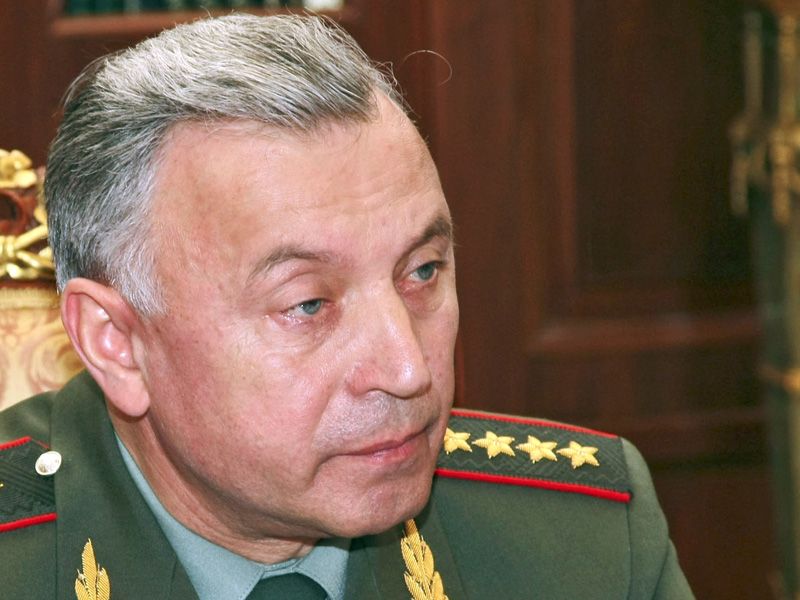
The Shifting Strategic Priorities of the Russian Navy
Publication: Eurasia Daily Monitor Volume: 6 Issue: 195
By:

Over the last two decades, the oceanic navy that Russia inherited from the Soviet Union has declined in size and quality. There were repeated calls from naval officers over the last decade for new construction and a revival of the navy. On Navy Day July 27, 2008 the Commander-in-Chief of the Russian Navy Admiral Vladimir Vysotsky spoke of a revival of Russian naval power over the next decade and declared that the navy would add six carrier battle groups to its complement of warships. Construction of these ships, he said, would begin in 2012 with three of the carriers assigned to the Northern Fleet and the other three to the Pacific Fleet. This month, after reviewing the naval activities of the Baltic, Northern and Black Sea Fleets during the exercise Zapad 2009, President Dmitry Medvedev repeated the call for a revival of Russian naval power and promised new acquisitions over the next decade. Medvedev noted that naval appropriations had not suffered major cuts during the current economic crisis. He stated: “I am convinced that over the next decade we can re-establish our navy at the level necessary to our state. . . . We need a powerful fleet” (Flag Rodiny, October 2).
Medvedev did not speak of six carrier task forces, and recent developments seem to indicate some reordering of naval priorities. These changes do not preclude the construction of carriers over the next decade, but suggest greater attention to naval balance. Yet, balance in the Russian case refers to the ability of each fleet to perform missions as the maritime flank of the Russian army in the absence of support from other naval forces, because of the ease of isolation of each naval theater in time of war.
Since the Russian navy played an active supporting role in the Russia-Georgia War in August 2008, greater attention has been devoted to the Black Sea Fleet and its future. During that conflict the Black Sea Fleet landed troops in Abkhazia and blockaded the Georgian ports of Poti and Batumi. On August 10, while approaching the Russian amphibious convoy off the Abkhazian port of Ochamchira, a Georgian flotilla of small craft were attacked by the missile corvette Mirazh and one of the craft was sunk. Thereupon, the Georgian vessels sailed back to Poti where two were sunk in their docks, and one towed to sea and sunk without resistance by their crews. The Black Sea Fleet, led by the cruiser Moskva, had sailed from Sevastopol, which led to increased tension between Russia and Ukraine, since the latter hosts the Russian fleet at Sevastopol under a lease agreement that extends to 2017. Recently, when Georgian warships intercepted commercial vessels sailing to Abkhazian ports, the Russian government announced that in the future the Black Sea Fleet and the Russian Coast Guard will protect such shipping from interference.
Much attention has been devoted to the fate of the Russian base at Sevastopol after 2017, since the loss of the base would erode Russia’s capacity to command the Black Sea. This view, however, does not take into account the fact that Sevastopol is an operating base and not a major ship building facility. Since the eighteenth century, the capital ships of the Black Sea Fleet have been built at Nikolaev (Mykolaiv in Ukrainian). However, neither Russia nor Ukraine have made use of the yards for new construction, and both fleets are aging and in need of refits for the vessels in service. Nikolaev does have some modest commercial construction, but it has lost its place as the home of major naval shipyards. For Russia, this fact has meant the prospect of a steady decline of Russian naval power in a theater of ongoing military operations. The decline in both the Ukrainian and Russian Black Sea Fleets has shifted the naval balance. Among the Black Sea littoral states, only Turkey has engaged in significant naval modernization over the last decade, and that seems to have been driven by naval competition with Greece.
Two recent developments suggest that the Russian government has begun to address this problem of decline in the wake of the Russia-Georgia War. First, on September 1 Medvedev issued a decree creating the post of Deputy Commander for Naval Affairs in the North Caucasus Military District and subordinating the operations of the Black Sea Fleet and the Caspian Flotilla to the military district commander (Nezavisimoe Voennoe Obozrenie, September 11-17). This will ensure the unity of command for army, air and naval forces in this theater of military operations and re-emphasize what was a traditional function of Russian naval forces in this theater as an instrument of presence and intervention on the maritime flanks of Russian armies in the Caucasus. This emerged in the long wars against the mountaineers in the nineteenth century. During World War I the Russian navy developed specialized shallow-draught landing craft to conduct amphibious operations against the eastern Black Sea coasts of Anatolia. The modern version of the frigate, gunboat, or shallow-draught landing craft for such power projection is the amphibious assault ship.
Another manifestation of strategic change with regard to the Black Sea Fleet is linked to Moscow’s plan to purchase from France one helicopter-amphibious assault ship of the Mistral class, with an option to build three under license in Russian shipyards. The procurement of the Mistral was discussed in the Russian press as an affront to its own shipyards. Army-General Nikolai Makarov, the Chief of the General Staff, justified the decision based on the advanced characteristics of the French ship, which can carry transport and attack helicopters, with space for 450 troops, capable of launching six landing craft (conventional and air-cushion), and in the absence of the capacity to build such ships in Russian shipyards. “No country in the world can do everything at a high qualitative level,” he noted (Rossiyskaya Gazeta, September 23).
Some critics have attacked the purchase as a commitment to future global power projection, but in this case, it would appear that Russia’s Mistral will solve two immediate problems: procurement of a key class of ship for the Black Sea Fleet and enhanced power projection capabilities in the region.




